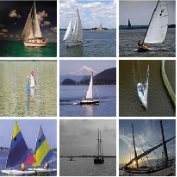Weakly-supervised object localization (WSOL) enables finding an object using a dataset without any localization information. By simply training a classification model using only image-level annotations, the feature map of the model can be utilized as a score map for localization. In spite of many WSOL methods proposing novel strategies, there has not been any de facto standard about how to normalize the class activation map (CAM). Consequently, many WSOL methods have failed to fully exploit their own capacity because of the misuse of a normalization method. In this paper, we review many existing normalization methods and point out that they should be used according to the property of the given dataset. Additionally, we propose a new normalization method which substantially enhances the performance of any CAM-based WSOL methods. Using the proposed normalization method, we provide a comprehensive evaluation over three datasets (CUB, ImageNet and OpenImages) on three different architectures and observe significant performance gains over the conventional min-max normalization method in all the evaluated cases.
翻译:尽管许多WSOL方法提出了新的战略,但在如何使级动动地图(CAM)正常化方面并没有实际的标准。因此,许多WSOL方法由于滥用正常化方法而未能充分利用其自身的能力。我们在本文件中审查了许多现有的正常化方法,并指出这些方法应根据给定数据集的特性加以使用。此外,我们提出了一个新的正常化方法,以大大增强任何基于CAM的WSOL方法的性能。我们采用拟议的正常化方法,对三种不同的结构(CUB、图像网和OpenImaages)进行了全面评价,并观察了所有被评估案例中常规微轴正常化方法的显著绩效收益。




